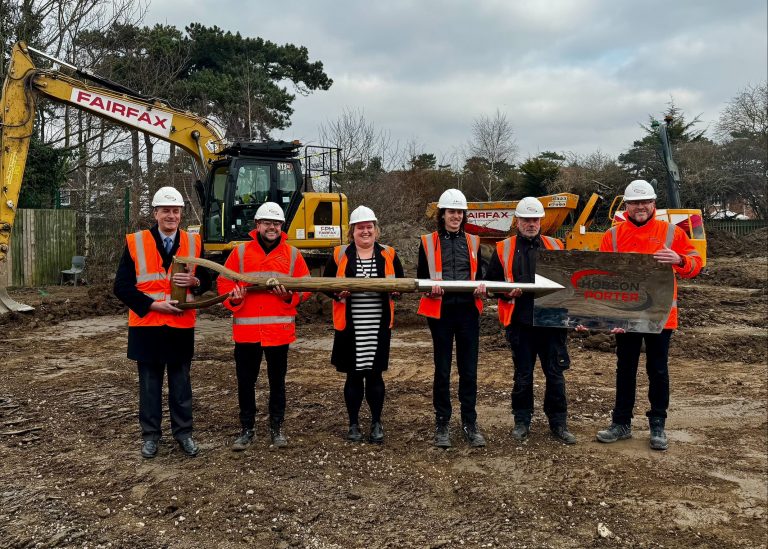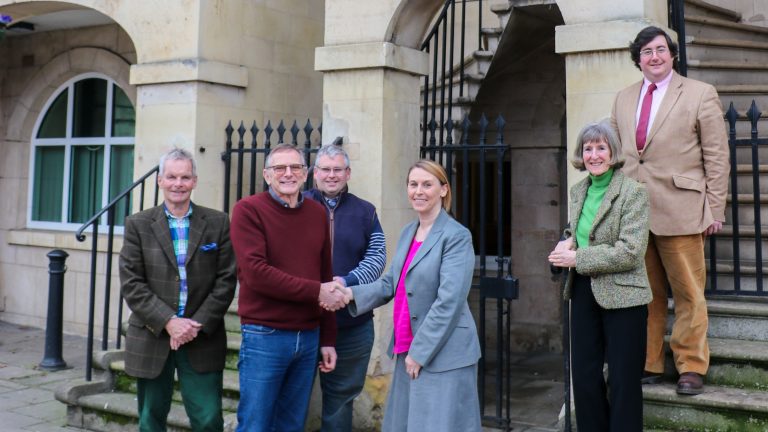Grimsby secures £20m to build stronger communities
Business hub to be created at Grantham Library
Grantham is set to benefit from a new business hub, which will bring flexible workspaces with modern technology to the library.
Subaru Forester
An unrivalled combination of safety, capability and reliability
Since its launch in 1997, the Subaru Forester has been a mainstay of the motoring world, with more than five million vehicles sold globally and over 400,000 cars shifted in Europe alone. The 2025 iteration keeps momentum by mixing refinement with ruggedness to become the perfect companion for adventure.
The new Forester has been redesigned to express its all-weather performance with cleaner, simpler, and more subtle styling. The vehicle offers improved drivability and increased on and off-road capability over the earlier model.
It matches Subaru’s iconic symmetrical, always-on, all-wheel drive system to an enhanced edition of the company’s renowned e-Boxer mild-hybrid power unit. It also boasts an improved X-mode terrain selection system and class-leading 220mm ground clearance.
The Forester offers three trim levels: Limited, Field, and Touring. The test subject here is the £42,995 top-of-the-line Touring model, which is attractive with its glossy blacked-out exterior trim and 19-inch alloy wheels.
Indeed, the Subaru impresses with its new looks at first glance. The front grille adds a sense of width and solidity, capped by slender signature lights and blackout headlamps that give it a contemporary feel. Fresh LED cornering lights also increase night-time visibility by lighting up the front of the vehicle while turning, helping you spot potential obstructions sooner.

The side is defined by sleek lines interrupted only by pleasingly sculpted wheel arches that accommodate attractive alloy wheels, contributing to the Forester’s robust appearance.
The large-opening tailgate provides a spacious cargo area, which we’ll discuss further in a bit. Plus, details, such as a hummingbird design on the windscreen and paw prints on the door trim, contribute to the Subaru’s lively personality.
The new Forester comes with an 11.6-inch Full HD infotainment touchscreen with a resolution of 1920×1080 to improve the usability of its features and controls. The system has increased connectivity through Apple CarPlay and Android Auto – and improved navigation compatible with what3words.
The Subaru’s 2.0-litre four-cylinder naturally aspirated engine delivers smooth acceleration and has gained more torque – 182Nm @ 4000 RPM. The X-mode is ideal for going off the tarmac – and has settings for stuff like mud and snow. And you’ll be glad that the front seats are designed to minimise fatigue and maximise comfort during long drives. The cabin also offers class-leading quietness thanks to active acoustic engineering. This serves to create a serene environment.
Functionally, the 2025 Forester boasts an impressive 508 litres of boot space, expandable to 1,720 litres when needed. Features like the hands-free powered tailgate with a kick sensor simplify loading and unloading.
The redesigned Forester’s permanent symmetrical all-wheel drive and specially engineered e-Boxer mild-hybrid powertrain manage the power split between the electric motor and engine through seamless switching between three driving modes: Engine, EV, and Motor Assist. This versatility enhances fuel efficiency according to driving conditions.
All Subaru Foresters have a factory warranty of three years or 60,000 miles. The traction battery has an eight-year or 100,000-mile warranty. Maintenance intervals are every 12,000 miles or once a year, whichever comes first.
Although it sells well globally, this model isn’t considered especially common in the UK compared with other vehicles, which adds to its appeal by ensuring you’ll stand out. Only time will reveal whether this sixth-generation Forester becomes the best-selling version to date.
Fast Facts
New 2025 Subaru Forester:
-
- Max speed: 117 mph
- 0-62 mph: 12.2 secs
- Fuel economy: 34.9 mpg
- Engine layout: 2.0-litre four-cylinder
- Max. power (BHP): 134
- CO2: 183 g/km
- Price from: £42,995 – as tested (Touring model).
Available at RICHTOY, 1-2 King Street, Winterton, North Lincolnshire DN15 9RN. Tel: 01724 735282. www.richtoy.co.uk
Green light granted for £45m residential development in Witham St Hughs
Work starts on major extension to Grimsby sixth form college
Police and Crime Commissioner advocates prostate cancer testing
An interview with chart-topping singer Gareth Gates
 I’m just really looking forward to being here in Grimsby on Thursday 27 March. It’s a really fantastic show, perfect if you’re into love films, if you’re into movies. Either bring your partner or bring your girlfriends and come and have a great night with us. I think it’s going to be a real fantastic night.
‘Gareth Gates Sings Love Songs from the Movies’ will visit Grimsby Auditorium on Thursday 27 March, with tickets available now.
I’m just really looking forward to being here in Grimsby on Thursday 27 March. It’s a really fantastic show, perfect if you’re into love films, if you’re into movies. Either bring your partner or bring your girlfriends and come and have a great night with us. I think it’s going to be a real fantastic night.
‘Gareth Gates Sings Love Songs from the Movies’ will visit Grimsby Auditorium on Thursday 27 March, with tickets available now.
See this interview in the March issue of Lincolnshire Today Magazine here.
Lincoln College to sponsor County Open Water Swimming Championship 2025
Trust takes ownership of town hall ahead of £3.6m regeneration project
Lincolnshire County Council has passed ownership of Bourne Town Hall to a Trust so a £3.6m redevelopment project can begin.
The project will see a large community space created on the ground floor for activities and events. Upstairs, an 80-seat auditorium will be created in the old courtroom, with the adjoining retiring room acting as a dressing room for acts or a breakout space. Solar panels will help cut the building’s carbon footprint and reduce running costs, whilst an extensive restoration will take place on the clock tower to restore its chimes. Cllr Charlotte Vernon, chairman of the council’s Bourne Town Hall Management Committee, said: “The Trust has done a brilliant job over the last few years tirelessly preparing for the regeneration of this excellent building. Recognising the work that has gone into the project already, the committee was delighted to vote to transfer the Town Hall over, and now the exciting work can start in transforming this space. “Bourne is incredibly lucky to have such a large group of committed and welcoming volunteers; what a fantastic legacy to leave in the town. “I know the residents of Bourne will join me in thanking all those who have given so much time over the last few years and will continue to do so as the building work begins.” Dating from 1821, the Old Town Hall’s unique and varied history has seen it used as a fire station, courtroom, market stall storage, and district council office.














